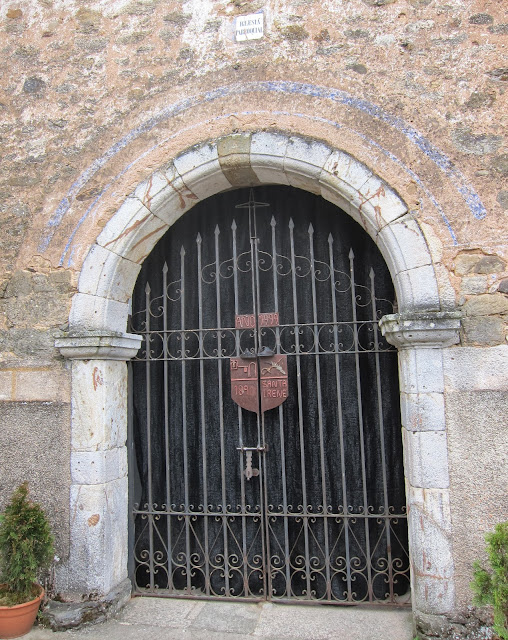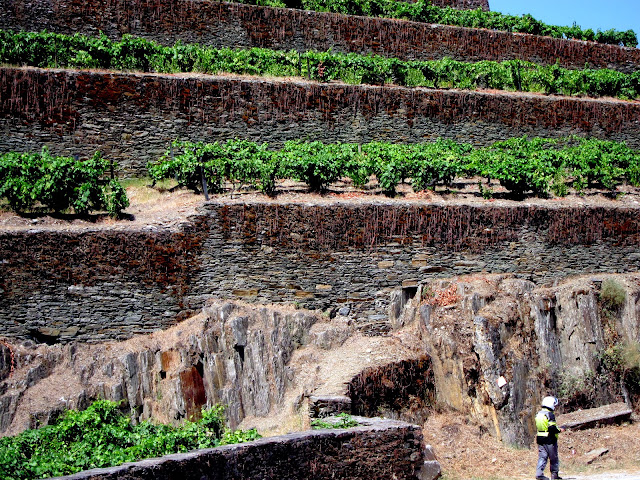While Dan and I were in the Picos de Europa, we met a Spanish couple looking for a cooler place than where they live, on the coast, for a summer home. We were unsure if we would travel into Portugal at the time. They encouraged us to visit the Douro River Valley area. We're glad we did as the riding was interesting and twisty. Here is a bit of information from Wikipedia.
The Douro vinhateiro (=winegrowing), an area of the Douro Valley in Portugal, has been classified by UNESCO as a World Heritage Site. Traditionally, the wine was taken down river in flat-bottom boats called rabelos to be stored in barrels in cellars in Vila Nova de Gaia, just across the river from Porto. In the 1950s and 1960s, dams were built along the river ending this river traffic on Spanish and border sections. Now Port wine is transported in tanker trucks
The Douro has a
microclimate
] allowing for cultivation of
olives,
almonds, and especially
grapes that are important for making the famous
Port wine. The region around Pinhão and
São João da Pesqueira is considered to be the center of Port wine, with its
quintas (or farms/estates) that extend the almost vertical slopes along the river valleys. Many of these
quintas are owned by multinational wine companies.
Recently, a prosperous
tourist industry has developed based on river excursions from Porto to points along the Upper Douro valley.
There are five dams on the Portuguese Douro which make the flow of water uniform, generate
hydroelectric power, and allow navigation. Ships with a maximum length of 272 ft and width of 37 ft can pass through five
locks. The highest one on
Carrapatelo dam has a maximum lift of 115 ft.
The
Douro railway line (in Portuguese:
Linha do Douro) was completed in 1887; it connects Porto, Rio Tinto, Ermesinde, Valongo, Paredes, Penafiel, Livração, Marco de Canaveses, Régua, Tua and Pocinho. A Heritage archeological site exists in the valley.
Côa Valley Paleolithic Art site.












































No comments:
Post a Comment